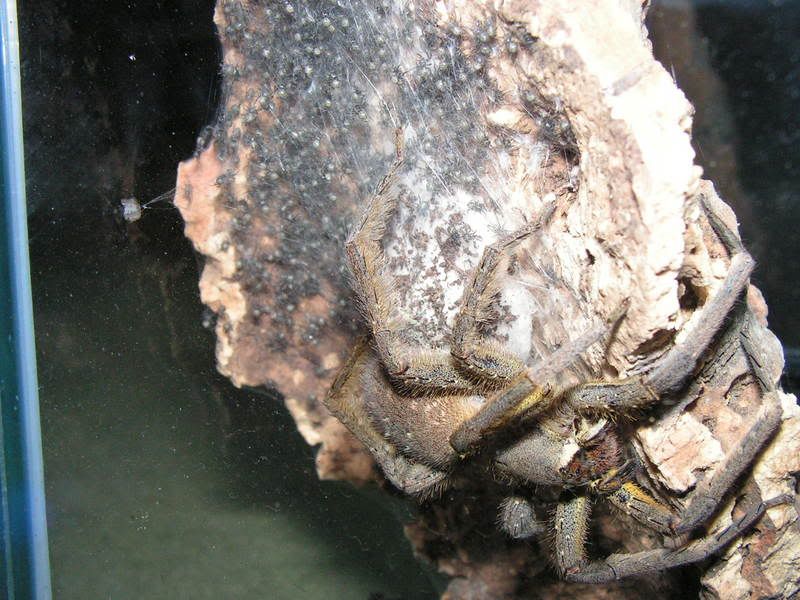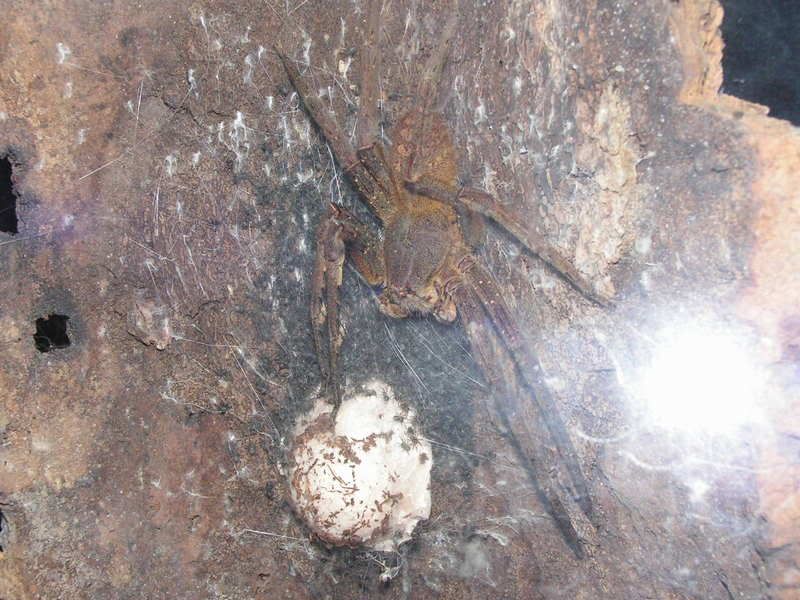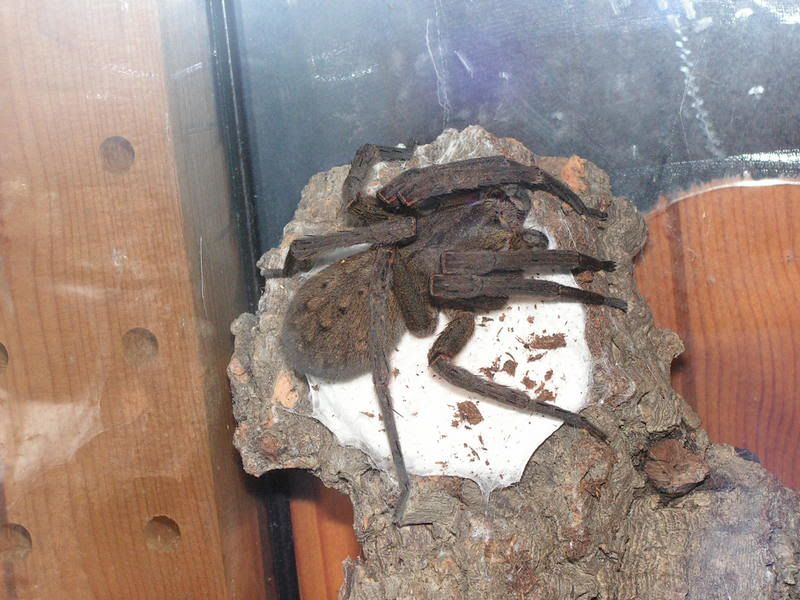- Joined
- May 7, 2005
- Messages
- 731
Phoneutria boliviensis - Addendum
Addendum: Phoneutria bolivensis
After I finally managed to make my way to the amazon rainforest to take a look at the lifestyle of my most beloved genus for myself, I want to add the following:
Thesis
P. bolivensis seems to be not only geographically much wider distributed than other Phoneutria species, apparently this species is also much wider distributed in specimen density in a given area.
This is, at least to my opinion, not that surprising, as P. boliviensis is a rather medium sized species in comparison to P. fera and P. reidyi, that are said to be found in the same area where I was around.
However, I wasn´t able to locate one single specimen of one of the other two mentioned species.
I don´t take this for too surprising, due to the following facts:
Both species, P. fera and P. reidyi as well, display two of the biggest ctenid species at all, with body sizes around 5cm (2”) and legspans of more than 15cm (6”) in really big specimen. With this sizes, they belong to the top predators in the invertebrate community in their habitats. A certain area can just accommodate a limited amount of such large predators.
Especially the presence of maximum size-potential specimen may be very limited in one area.
While I didn´t find the mentioned Phoneutria species, I found literally masses of an Ancylometes species. The specimen density was surprisingly high in a very limited area. However, really big specimen of that species were rather rare, I found some, but most were rather medium sized, nevertheless, I am quite sure they were adult already, as some of the females carried sacs.
Interestingly, the only other spider species, that could be found within the same area in high density was a rather small hunting spider (Sparassidae? Trechalaeidae?) that had completely different lifestyle habits (arboreal). Through the differences in sizes and lifestyle I came to the impression that nature balances the species and specimen distribution in a given habitat very well.
Observations
To my surprise, observations made in the natural habitat resembled exactly the observations made under captive conditions:
P. boliviensis can quite often be found on ground level, far more often than any other Phoneutria species i´ve seen so far.
Also with “wild” specimen, it could be confirmed that this species is quite relaxed for Phoneutria standards. Wild living specimen could easily be picked up with bare hands, as long as one was gentle with them (not even one single thread display was thrown).
To my opinion there´s at least one major point about this species that needs verification: possible geographic colouration differences. All found specimen looked exactly the same. Given the far distribution of this species i´d take it for very interesting if one would be able to come up with colouration or even marking differences within this species.
This is at least a possibility, though not one that has necessary to be given, as all specimen of Ancylometes bogotensis (this species has, too, a very wide geografic distribution) that i´ve seen so far looked exactly the same.
If the latter should prove to be true, it´d explain why I found some rumours some years back which originated to some scientific papers from south-america and stated that P. boliviensis would be the only Phoneutria species that could be id éd by just it´s appearance.
Take care guys and gals...
Greetings,
Stefan
Addendum: Phoneutria bolivensis
After I finally managed to make my way to the amazon rainforest to take a look at the lifestyle of my most beloved genus for myself, I want to add the following:
Thesis
P. bolivensis seems to be not only geographically much wider distributed than other Phoneutria species, apparently this species is also much wider distributed in specimen density in a given area.
This is, at least to my opinion, not that surprising, as P. boliviensis is a rather medium sized species in comparison to P. fera and P. reidyi, that are said to be found in the same area where I was around.
However, I wasn´t able to locate one single specimen of one of the other two mentioned species.
I don´t take this for too surprising, due to the following facts:
Both species, P. fera and P. reidyi as well, display two of the biggest ctenid species at all, with body sizes around 5cm (2”) and legspans of more than 15cm (6”) in really big specimen. With this sizes, they belong to the top predators in the invertebrate community in their habitats. A certain area can just accommodate a limited amount of such large predators.
Especially the presence of maximum size-potential specimen may be very limited in one area.
While I didn´t find the mentioned Phoneutria species, I found literally masses of an Ancylometes species. The specimen density was surprisingly high in a very limited area. However, really big specimen of that species were rather rare, I found some, but most were rather medium sized, nevertheless, I am quite sure they were adult already, as some of the females carried sacs.
Interestingly, the only other spider species, that could be found within the same area in high density was a rather small hunting spider (Sparassidae? Trechalaeidae?) that had completely different lifestyle habits (arboreal). Through the differences in sizes and lifestyle I came to the impression that nature balances the species and specimen distribution in a given habitat very well.
Observations
To my surprise, observations made in the natural habitat resembled exactly the observations made under captive conditions:
P. boliviensis can quite often be found on ground level, far more often than any other Phoneutria species i´ve seen so far.
Also with “wild” specimen, it could be confirmed that this species is quite relaxed for Phoneutria standards. Wild living specimen could easily be picked up with bare hands, as long as one was gentle with them (not even one single thread display was thrown).
To my opinion there´s at least one major point about this species that needs verification: possible geographic colouration differences. All found specimen looked exactly the same. Given the far distribution of this species i´d take it for very interesting if one would be able to come up with colouration or even marking differences within this species.
This is at least a possibility, though not one that has necessary to be given, as all specimen of Ancylometes bogotensis (this species has, too, a very wide geografic distribution) that i´ve seen so far looked exactly the same.
If the latter should prove to be true, it´d explain why I found some rumours some years back which originated to some scientific papers from south-america and stated that P. boliviensis would be the only Phoneutria species that could be id éd by just it´s appearance.
Take care guys and gals...
Greetings,
Stefan








